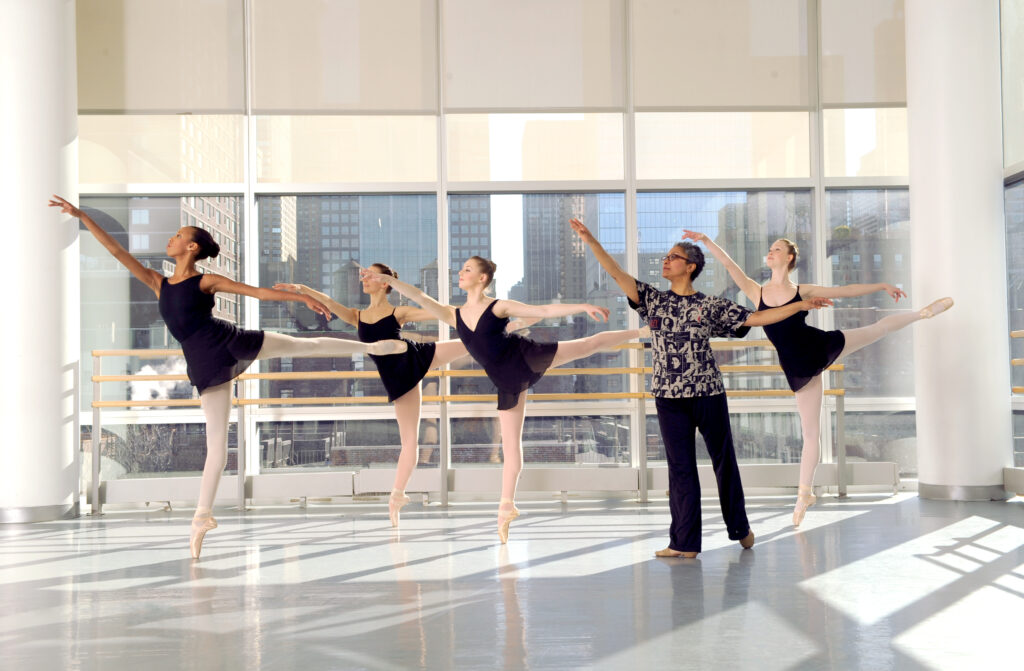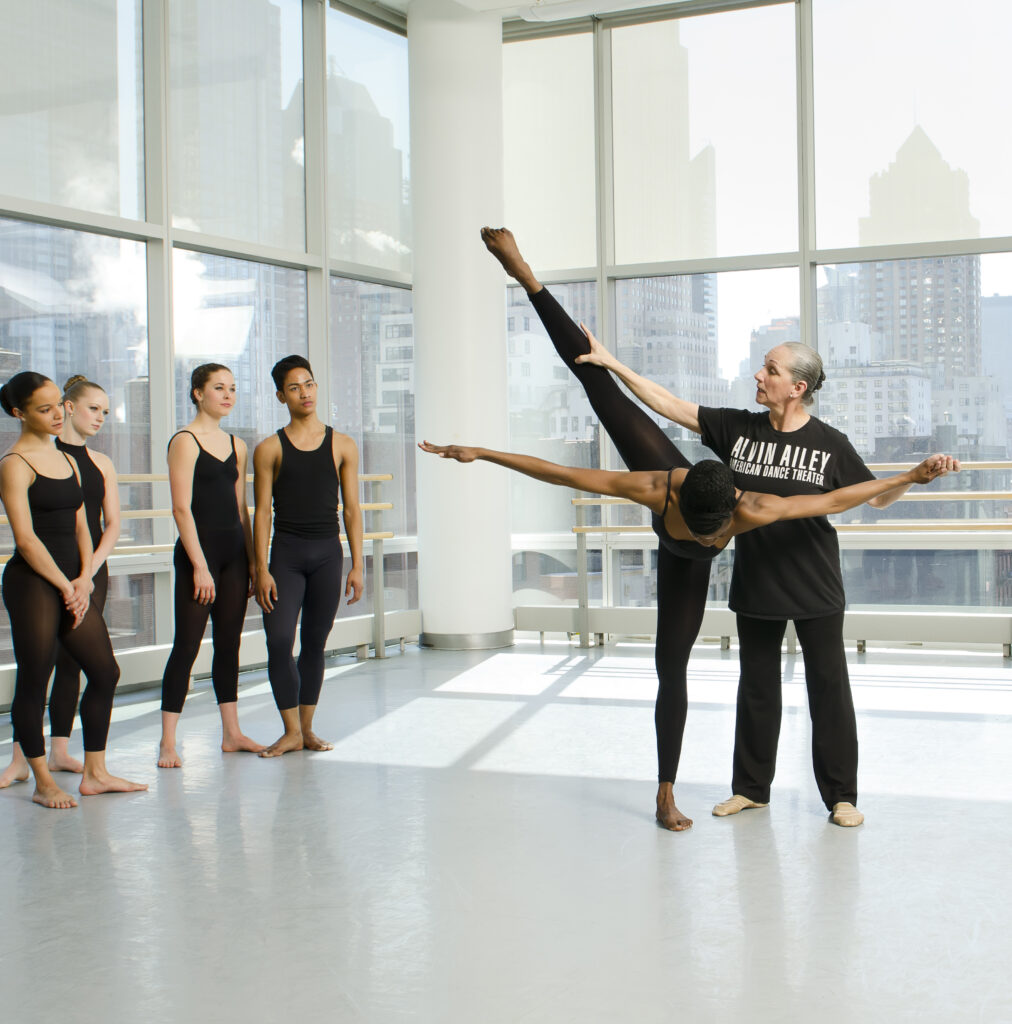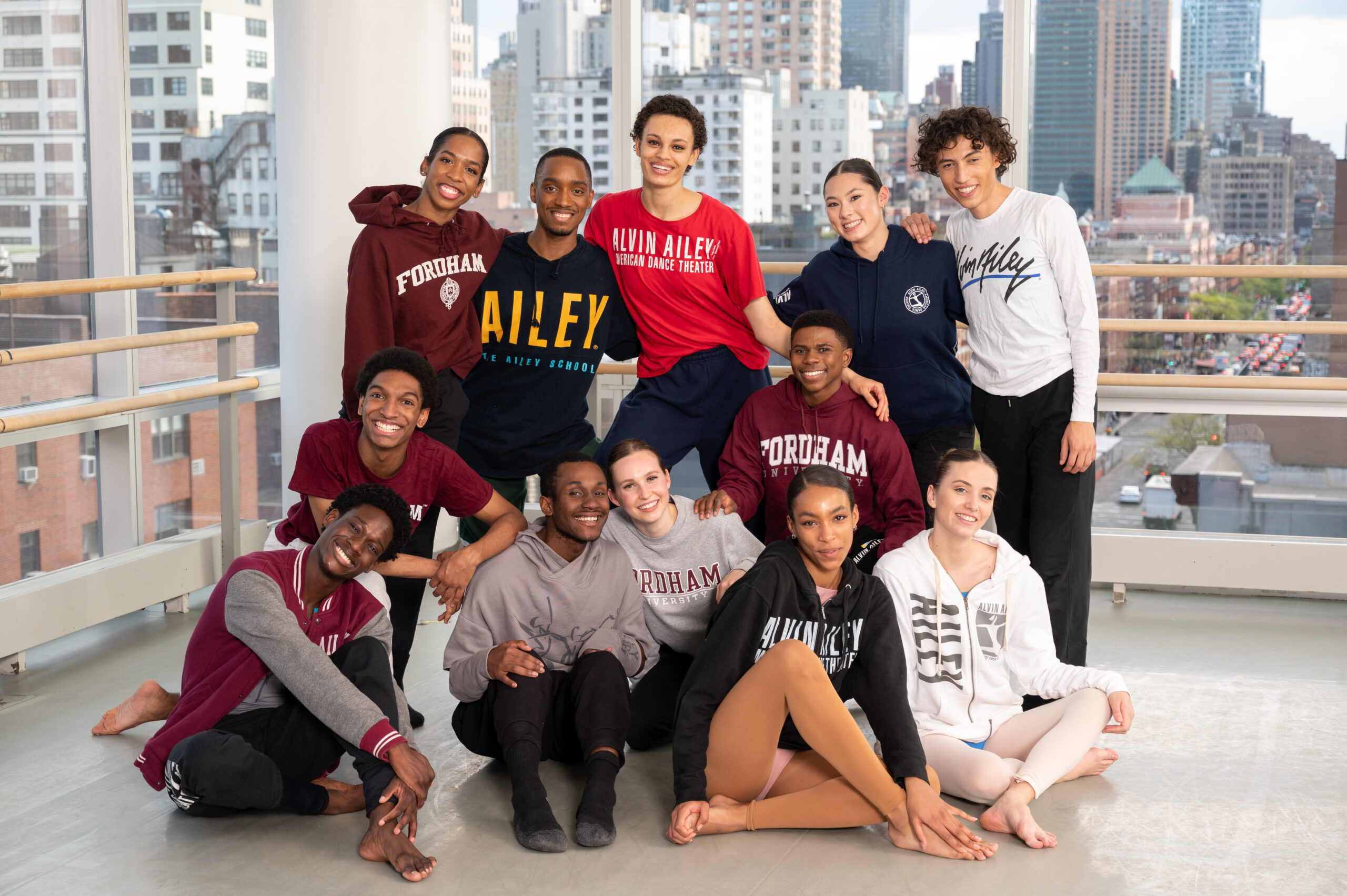The Ailey/Fordham Dance BFA Turns 25
The story took flight with a chance encounter at the 60th Street post office in Manhattan. It was the mid-’90s and Denise Jefferson, then head of The Ailey School, and Edward Bristow, then dean of Fordham College at Lincoln Center, would often bump into each other in the neighborhood. At that point, both schools were already looking for ways to expand their relationship, and Jefferson had previously floated the idea of starting a BFA program. While standing in line to buy stamps, Bristow says, their friendly chitchat set in motion an idea to form a planning committee tasked with creating a BFA program that would change the lives of scores of young dancers.
This fall, the celebrated collaboration that grew out of that conversation, the joint Ailey/Fordham BFA Program, marks its 25th anniversary. Two and a half decades ago, the two institutions opened their doors to the first cohort of students that would receive conservatory-level dance training paired with a robust liberal arts education.
“It was pretty radical to create a program that was both serious about dance and serious about academics,” says Ana Marie Forsythe, a longtime Ailey School teacher who helped launch the program and led it briefly after Jefferson’s death in 2010. If anything, its immense success has proven the notion Jefferson championed, says Forsythe, that “dancers are smart enough, they can do two things at the same time.”
Expanding Potential
When Fordham College at Lincoln Center started welcoming students in 1968, the campus “opened in the center of the arts world,” Bristow says—or, more accurately, the new center of the performing arts that was still taking shape. Fordham was adjacent to New York City Ballet’s new home and surrounded by other leading arts organizations. By the time Bristow became dean in 1991, Ailey had moved into its headquarters half a block away on 61st Street.
Despite its location, there was a sense among Fordham faculty that “the university really hadn’t taken advantage of its potential to expand in all of the arts,” Bristow says. “There was virtually no music program, and there was no dance program.” NYCB dancers had been showing up to take evening courses for years, and Fordham had extended a similar arrangement to Ailey company members. Professors understood that dancers were “terrific to teach in academic subjects,” says Bristow. “They knew how to learn.”
On the Ailey side, “we discovered that sometimes dancers would stop dancing because they or their parents wanted them to go to college,” Forsythe says. Or, after years of performing, dancers would have to find a place to start over as freshmen. A partnership between the two institutions would mean young artists wouldn’t have to choose between college and a dance career.
It didn’t hurt that the university’s president at the time, Joseph O’Hare, was a dance fan who admired Judith Jamison, the former Ailey superstar who’d taken the reins as the company’s artistic director. When Bristow and Jefferson brought the idea to their respective leadership, they found support on both sides. It took about two years of planning with a team—working out a financial structure, applying for accreditation, setting up a curriculum and admissions criteria—to make it happen.
“When the first class arrived, it was the realization of a dream for Denise and me,” says Bristow.

Developing Dancers and Global Citizens
Students in the BFA program have always trained across multiple genres and techniques, such as ballet, pointe, Horton, Graham-based modern, Limón, West African dance, jazz, and partnering. They take courses in dance composition, dance history, music, and anatomy and kinesiology, and keep up a full academic load that spans English, social science, philosophy, history, and foreign language. “We’re not only training dancers,” says Melanie Person, co-director of The Ailey School and head of the BFA program since 2011. “At the core of it, we’re developing who a dancer is,” she says. “Not only as an artist—as a person, a critical thinker, a global citizen of the world.”
The central challenges of the Ailey/Fordham BFA Program have long been balancing hectic schedules, managing the cost of tuition for a private university degree, continuing to strive for diversity in the student body, and keeping up with an ever-evolving dance landscape. To that end, Person says, they’re always thinking about how to introduce students to contemporary forms, movement languages, and choreographic voices. The program’s enormous breadth “gave me such a sense of versatility as a dancer,” says Danelle Morgan, who became a Radio City Rockette even before she graduated in 2007 and has since returned to teach workshops at Ailey in partnership with the Rockettes. It was important to Morgan to be part of a diverse community while getting a college degree. “Not only did I feel accepted,” she says, “but I also felt that I could lean into learning more about other people and about other cultures. It opened up my world.”
Students have plenty of performance opportunities and regular exposure to Ailey’s main and second companies. Ricardo Zayas, a 2005 graduate who apprenticed with Complexions Contemporary Ballet as a junior and joined Ailey II as a senior, says the program allowed him “to test the waters of what it was like to become a working professional.” Zayas has gone on to dance with companies like Alonzo King LINES Ballet as well as in TV and movies (Steven Spielberg’s West Side Story) and on Broadway (most recently Moulin Rouge!). “My resumé had begun building itself well before my graduation,” he says, “and I’m so thankful for that.”

Celebrating Alums
Jacquelin Harris recalls being starstruck as a student seeing Ailey company dancers in the elevator. “I remember them always taking a moment to say hi to us and be so kind and human,” says Harris, who graduated with her BFA in 2014 and pursued a second major in math. She joined Ailey II and then the main company, where she continues to shine today. “I love being able to be on the other side and hopefully give them a little bit of what I received when I was in school.”
The BFA program’s success can be measured by the success of its graduates, who are thriving as attorneys and professors—and, of course, as dancers. It’s hard to go anywhere without running into a former student or seeing their name in a program, Person says. Or as Harris puts it: “It feels like everywhere I go, I see my family.”
The festivities in the works to mark the 25th anniversary coalesce around the idea of bringing alums back home. Person is putting together a special performance for the spring and plans to arrange for alums to teach master classes, offer choreographic workshops, and participate in panels. “My hope is that they realize that the doors are always open, not just for this 25th anniversary,” she says. The celebration of this milestone, she says, is ultimately about “realizing the full potential of this program and the artists in it—those who’ve come before and those who will come after.”




